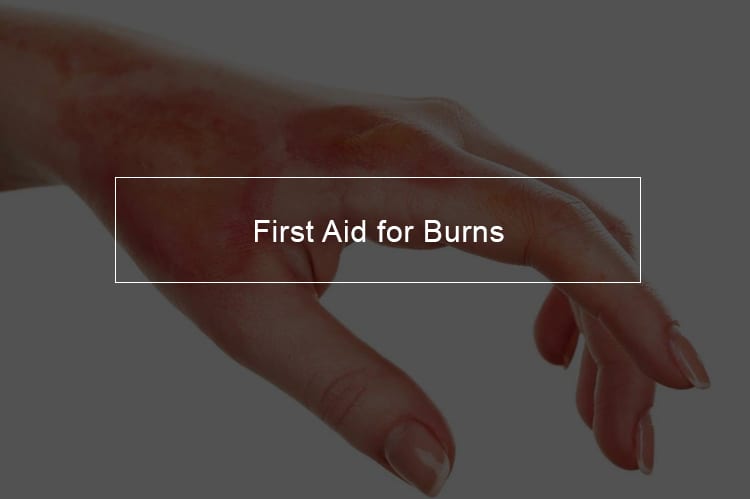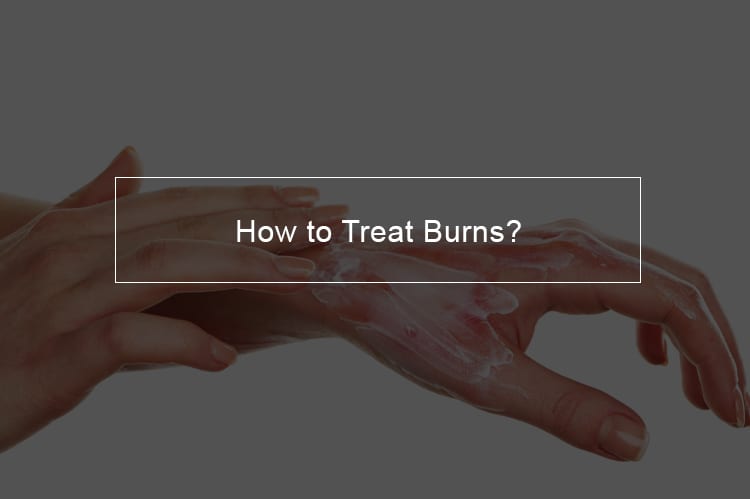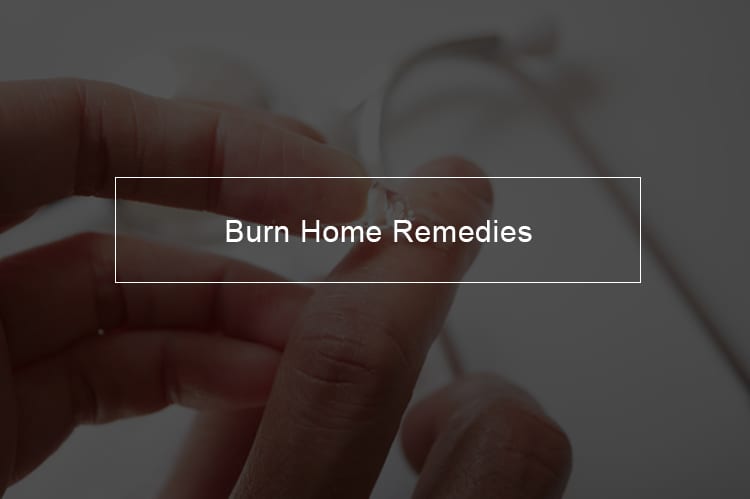
When you get burnt, the skin is the first victim. The importance of the skin cannot be overstated. As our first line of defense, the skin is charged with protecting the body against the entry of viruses and bacteria. Moreover, it plays a crucial role in temperature and fluid regulation in the body. Any injury to the skin can comprise your health.
The layers of the skin affected by a burn
To understand the effect of a burn on the skin, first, we must know the layers of the skin. The first layer, which is the outermost layer is the epidermis. Underneath that, is the second layer, the dermis. Here you find the sweat glands, blood vessels, nerves. Underneath this layer is the innermost layer, the hypodermis. This is where all the most important tissues are. Damage here is very serious.
How are burns classified?
The layers of the skin affected by a burn
How severe a burn is will depend on how deep the damage penetrates the skin layers mentioned above. There are four categories based on how severe burns are:
First degree burns
These are the least severe because they only damage the outermost layer of the skin.
Second-degree burns
This is not that severe. It is worse than the first degree as it affects deeper layers of the skin.
Third-degree burns
This qualifies as an emergency. This burn is severe as it affects all the layers of the skin.
Fourth-degree burns
This category is the most severe. The damage is deep and reaches the bones and joints.
The damage from a first-degree burn can grow deeper and evolve to a second-degree burn, especially if proper care is not observed. Deeper injuries lead to permanent scarring as it is the epidermis alone that has the ability to grow back.
Does the body area affected by a burn matter?
The severity of a burn can also be affected by the total area of the burnt surface on the body. Each of the body sections accounts for a percentage, and for the major burns, these percentages are added up to determine the total burn area. This is not done for the first-degree burn as the skin integrity is still intact.
The greater the percentage of body burn, the greater the risk of death. If your body is burnt more than 50%, there is very little chance of survival. The chances worsen for people in old age or with a medical condition. If 20% of the body is burnt a lot of fluid will be lost which can result in shock. Victims with less than 20% should survive after proper care.
How important is the burn location?
The body part burnt is also another factor in play. If someone is burnt around the neck, nose, face, and mouth, then they should seek immediate medical care. These areas can lead to breathing complications especially if the airway is obstructed through inflammation and swelling. The same problem can be caused by burns around the chest.
Burns around the fingers, arms, legs, or toes may put the victim at extreme risk as it may cause problems with the blood flow. Other areas that may need specialized care after a burn include the groin area, the back of the knee, and the palm of the hand.
How to heal a burn?

Burn Treatment
The depth of the burn, the location of the burn, and the surface area of the burn will determine the treatment of the burn.
How do you know if a burn needs medical attention?
If the following is true, call 911 for a medical emergency:
- if the burn has damaged all the layers of the skin, i.e., third-degree burn.
- if the face, hands, and genitals are burned.
- if the skin is charred and leathery.
- if the victim is an infant or an elderly person.
First Aid for Burns
Treating the different categories of burns
First aid for all types of burns
Whatever the category of burn you are facing, you should take the following steps:
Stop the burning
- The first step is to immediately put out the fire or stop contact with the hot surface, liquid, or steam.
- Remove smoldering things from the victim.
- Remove burning or hot clothing.
Remove constrictive clothing
Burns swell really first. Therefore, you should take off anything tight. This includes belts, jewelry, and any tight fitting clothes. The steps that follow next will depend on the degree of burn.
How do you heal a first-degree burn fast?
Cool the burn
For a first-degree burn, you should first cool it. Do this by either using a cool compress, i.e., a clean wet towel, or by running cool water over the burn. You can also immerse the burn in cool water. The key thing here is cool water, not cold water.
Protect the burn
Cover the burn with some clean cloth or a bandage that is not sticky, or if it is sticky, the sticky part should not touch the wound. To avoid infection, make sure the cloth is sterile and do not apply things on the wound that can lead to infection.
Treat the pain
This burn may not be severe, but it is still painful. You would need some over-the-counter medications such as ibuprofen, naproxen, or acetaminophen to relieve some of the pain.
Should you seek medical help for a first-degree burn?
This minor burn rarely requires medical intervention. However, visit a doctor if:
- signs of infection begin
- there is increased redness
- there is increased swelling
- high fever
- the burn is larger
- the pain lasts for a while
- the last tetanus shot was more than ten years ago.
How do you heal a second-degree burn fast?
Cool the burn
Put it in cool water for 15 minutes. You can also use cool running water or cool compress. Do not puncture the blister or use ice.
Protect the burn
Use a sterile, nonstick bandage to loosely cover the burn.
Prevent shock
To prevent shock:
- lay the victim flat
- raise the feet about 12 inches high
- if possible, raise the burn area above heart level
- cover the victim with a blanket
If this is painful, or the person has a head, leg, or neck injury then do not do it.
Visit a doctor
Some second-degree burns do not require a medical professional. However, the doctor can diagnose the damage, prescribe medications and possibly administer a tetanus shot.
How do you heal a third-degree burn fast?
Call 911 and seek immediate medical attention
As a medical emergency, call for immediate help.
Protect the burn area
Use a sterile sheet to cover large burn areas. If the fingers and toes are burned, use a dry sterile dressing to separate the burned fingers from the rest. Do not soak in water.
Prevent shock
To prevent shock:
- lay the victim flat
- raise the feet about 12 inches high
- if possible, raise the burn area above heart level
- cover the victim with a blanket
If this is painful, or the person has a head, leg, or neck injury then do not do it. A pillow should not be kept under the head of a victim with an airway burn. This could lead to blockage of the airway. A person with a facial burn should sit upright. The doctor will then give oxygen and treat the burn.
Other types of burns and how to heal them
What of electrical burns?
These are burns resulting from electric shock. The damaged caused my not be easily identified as it occurs in the nerves and muscles. This can lead to muscle fiber breakdown and hence the release of chemicals into the bloodstream and eventually causing kidney failure.
How do you heal an electrical burn fast?
This too is a medical emergency and should rush to the hospital.
What of chemical burns?
There are chemicals that generate heat when they come into contact with the skin. This causes a chemical burn. These burns are classified according to their acidity or pH level, less than 7 are acids, and more than 7 are alkalis.
How do you heal a chemical burn fast?
- Remove the chemical to stop contact with the skin.
- Take note of the chemical that caused the burn.
- Contact a hospital or Poison Control Center. Some chemicals are very hazardous and require immediate professional care.
How do you treat a burn at home?

Home remedies for burns
Home remedies for burn should only be used on first and second-degree burns. The other two severe types need immediate medical attention.
Run cool water on the burn
First-degree and second-degree burns can be soothed with cool water. The water can also prevent additional injury from the burn.
Relieve the pain with a cool compress
This is simply a wet piece of cloth kept on top of the burn. The compress will do well to relieve the pain and swelling. Apply it on the intervals of 5 to 15 minutes. Remember it is a cool compress, not a cold compress, make sure the water is not extremely cold as it can further irritate the burn.
Allowing cool water to run on the burn for 20 minutes will not only cool the skin but also relieve the pain and prevent the burn from getting deeper and affecting other layers of the skin.
Properly clean the burn
Cleaning the burn with a gentle antibacterial soap is essential. This will prevent infection. An infected burn can be a complication and will require medical care.
Use some antibiotics on your burn
Antibiotic ointments and creams can be used on burns with open blisters. These ointments help prevent infection in the open wound and also accelerates the healing process.
Does honey help burns?
There are honey bandages that prevent infection by sterilizing a burn. The same also relieves the pain associated with burns by soothing the skin. All this is possible because of the anti-inflammatory and antibacterial characteristics of honey.
Can vinegar help with a burn?
The acetic acid found in vinegar can relieve pain, inflammation, and itchiness from a burn. It will also protect the burn from infection as it has astringent and antiseptic properties. It is a component of aspirin. Alternatively, you can make a vinegar compress. This will draw out the heat reducing the pain in the burn.
Vanilla extracts for minor burns
There are some recommendations that suggest using vanilla extracts to relieve the pain. The idea is that the evaporating alcohol in vanilla will soothe the burn and cool it. This will reduce the pain. Simply dab some vanilla on the would using a cotton ball.
Some burns may need bandages
Burns that are in areas that can easily get dirt or rub with other parts need to be bandaged. This will reduce the risk of a fracture and hence infection. The same applies to blisters that are oozing. It is important not to ties the bandage too tight. And also, the stick part of the bandage should not touch the actual wound.In most cases, however, the minor burns and burn blisters do not require a bandage.
Aloe vera has the potential of treating burns
A lot of products and creams meant for burns have aloe vera as part of their ingredients. This is because of its antibacterial, pro circulation, and anti-inflammatory properties. Pure aloe vera will stop the pain, swelling, and inflammation. It will also play a part in promoting the growth and repair of the skin.
Relieve the pain with some over-the-counter medications
Getting burned is a painful affair, whatever the degree. All through the healing process, the burn can be a great source of discomfort. Take some pain medication that will reduce the swelling and relieve pain. Try ibuprofen which works as an anti-inflammatory medication and a pain reliever.
Do not pop burn blisters
Popping away those fluid-filled sacks resulting from burns can be very tempting. This will, however, lead to an infection, especially if the person popping it is not a doctor. You can let the burn blister be or visit a pro.
Keep the burn shaded from direct sunlight
Try to avoid the sun when healing from a burn. This will prevent the risk of worsening the burn and also reduce the pain. If you cannot stay away from the sun altogether, wear loose clothes that cover the area.
Using black tea bags to treat a burn
The tannic acid in black tea can be useful in extracting heat from a burn thereby cooling it off and relieving pain. Simply place a couple of wet black tea bags on the wound and let them draw the heat.
Using oats to treat a burn
When it comes to itchy burns, using oats can be very beneficial. Oats will soothe the skin and help reduce inflammation. Considering the negative effects of scratching a burn, you should try this.
Soak in an oat bath for 20 minutes. To prepare the oat bath, mix some oats in the bath water. You can add some baking soda as well; it will help with the inflammation. For smaller irritations, soak the area in a bowl of similar mixture. After you are done, do not dry with a towel, it will remove the remaining thin layer of oats. Let it dry on its own.
Using milk to treat a burn
Milk can potentially soothe burn wounds. The proteins and fat in milk will promote healing and relieve the pain. Simply deep the burn in milk and leave it for 15 minutes. Whole milk, full-fat, and yogurt can all work the same way.
Using vitamin C and vitamin E to treat a burn
Vitamin C plays a part in the synthesis of collagen thereby promoting the healing of wounds. Vitamin E, on the other hand, is an antioxidant, which means it can as well help with skin repair. Eating foods rich in such vitamins will help speed up the healing of burns.




